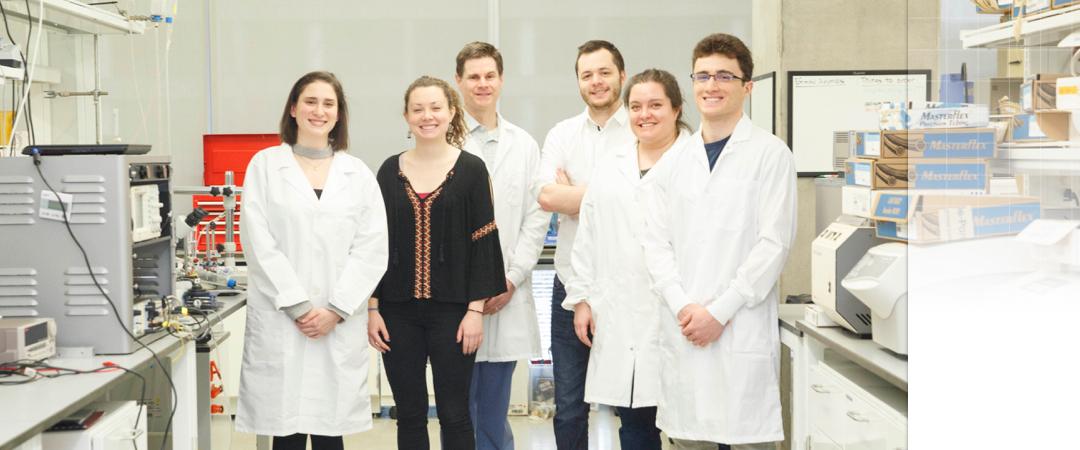Research Laboratories
Research Laboratories
Faculty in the Department of Biomedical Engineering and affiliated faculty maintain active research in the following laboratories and institutes:
Advanced Cellular Diagnostics and Therapeutics Laboratory: Professor Papa's Lab focuses on modifying cellular components to develop novel therapeutic and diagnostic platforms. The overarching goal of the lab is to develop bioengineered solutions to current clinical issues in cancer and vascular disease. Her work has received support from the Department of Defense with a Breast Cancer Breakthrough Award, for developing modified platelets as an anti-metastatic agent in pre-clinical models of breast cancer. Learn more about Professor Papa.
Assistive Robotics & Tele-Medicine Lab (Art-Med): Professor Park’s primary research interest centers on the coexistence and collaborative innovation between human intelligence and robotic technology, and spans machine learning, computer vision, haptics, and telepresence robotics. In ART-Med lab, he and his research group aim to develop novel and challenging robotic systems for useful and exciting applications. Their current research focuses on the investigation of two main areas: 1) multi-modality in human-robot interaction and assistive robotics, where they study the impact of multi-modal feedback on the aspects of human-robot interaction and its application in assistive scenarios; and 2) robot learning and humanized intelligence, where they focus on computational methodologies of machine learning in the aspect of robotic learning of human behaviors and intelligence. Learn more about Professor Park.
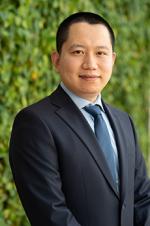
Bio-integrated Electronics Lab: Research in Professor Lu’s lab focuses on designing novel classes of optoelectronic materials, devices, and their integration strategies for use in biomedical applications to address complicated biological and clinical questions. We explore next-generation soft, lightweight, and bio-compatible materials and devices with an emphasis on creating organic and inorganic classes of optoelectronic systems, such as transparent electrodes, photo detectors, solar cells, and light emitting diodes. The goal is to provide healthcare platforms that can seamlessly integrate with biological systems to facilitate personalized medicine design and accurate disease diagnosis. The lab’s current research topics include: 1) advanced soft wearable and implantable optoelectronic devices for optogenetic modulation, electrical and optical recording; and 2) high-performance wireless power supplies for various biomedical applications. Learn more about Professor Lu.

The Kay Lab of cardiac research: Professor Kay's research group develops innovative technologies to study hypoxia, heart failure, and sleep apnea, with an emphasis on mitochondrial function, arrhythmia mechanisms, and recent emphasis in neurocardiology. The lab's expertise is in high-speed optical assessments of organ level physiology, including optical mapping, time-resolved absorbance spectroscopy, and neurocardiac optogenetics. For example, panoramic optical mapping of membrane potential is used to study the spatiotemporal dynamics of arrhythmias. NADH imaging provides insight into mitochondrial metabolic fluctuations and high-speed optical spectroscopy quantifies intracellular alterations of myoglobin oxygenation and mitochondrial redox state. The lab's research provides deeper insight into the development of new clinical devices and pharmaceutical therapies to prevent sudden cardiac death and to reduce the debilitating impact of sleep apnea and heart failure. Learn more about Professor Kay.
Cardiac Optogenetics and Optical Imaging Lab: The Cardiac Optogenetics and Optical Imaging Lab uses state-of-the-art engineering approaches and methods to gain insights about the electrical and mechanical function of cardiac cells and heart tissue. New tools for optical actuation and sensing/imaging/control are used to elucidate the mechanisms of normal and abnormal excitation in the heart, including the origin of life-threatening arrhythmias. This work can yield new experimental models for physiomics type of studies, drug and gene therapy testing 3D cellular platforms, an experimental setting for validation of computer models of excitable tissue. This research is multidisciplinary and involves a spectrum of experimental molecular and cell biology procedures, along with the application of design concepts from electrical, optical, mechanical and chemical engineering to create the enabling technology for studies of heart, neural tissues, and other applications. Learn more about Professor Entcheva.
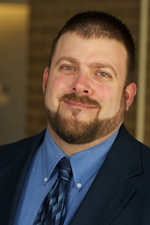
Optical and Acoustic Imaging Laboratory Professor Zara’s research is focused upon a range of optical and acoustic imaging technologies as well as image analysis in optical coherence tomography and MRI. The lab studies the diagnosis and therapy of multiple heath conditions, including oral and bladder cancers as well as epilepsy. Learn more about Professor Zara.
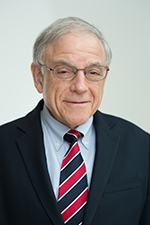
Medical Image Analysis Laboratory: Professor Loew’s laboratory aims to improve the understanding, analysis, and compression of medical images and signals. Multiple approaches are used, including multimodal image registration and validation, computer-aided diagnosis, and feature selection in pattern recognition and image processing. Learn more about Professor Loew.
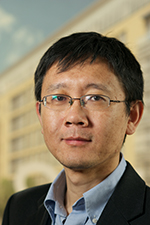
Nanophotonics and Microfluids Laboratory: Professor Li’s laboratory focuses on the integration of nanophotonics and microfluidics, or Optofluidics, for life sciences and medicine. Multiple projects analyze single cells for stem cell and cancer research. The lab also develops portable integrated biosensors for point-of-care diagnostics, environmental monitoring and food safety inspection. Learn more about Professor Li.

Therapeutic Ultrasound Lab: Professor Zderic has been actively involved in novel biomedical work in the area of therapeutic ultrasound and drug delivery. The current focus of her laboratory is in the application of low-intensity ultrasound to promote delivery of medications into the eye, high-intensity focused ultrasound therapy for tumor treatment, modeling of ultrasound effects in various biological tissues, and studies of the effects of ultrasound on modifying cellular responses such as insulin release from pancreatic beta cells. Learn more about Professor Zderic.


